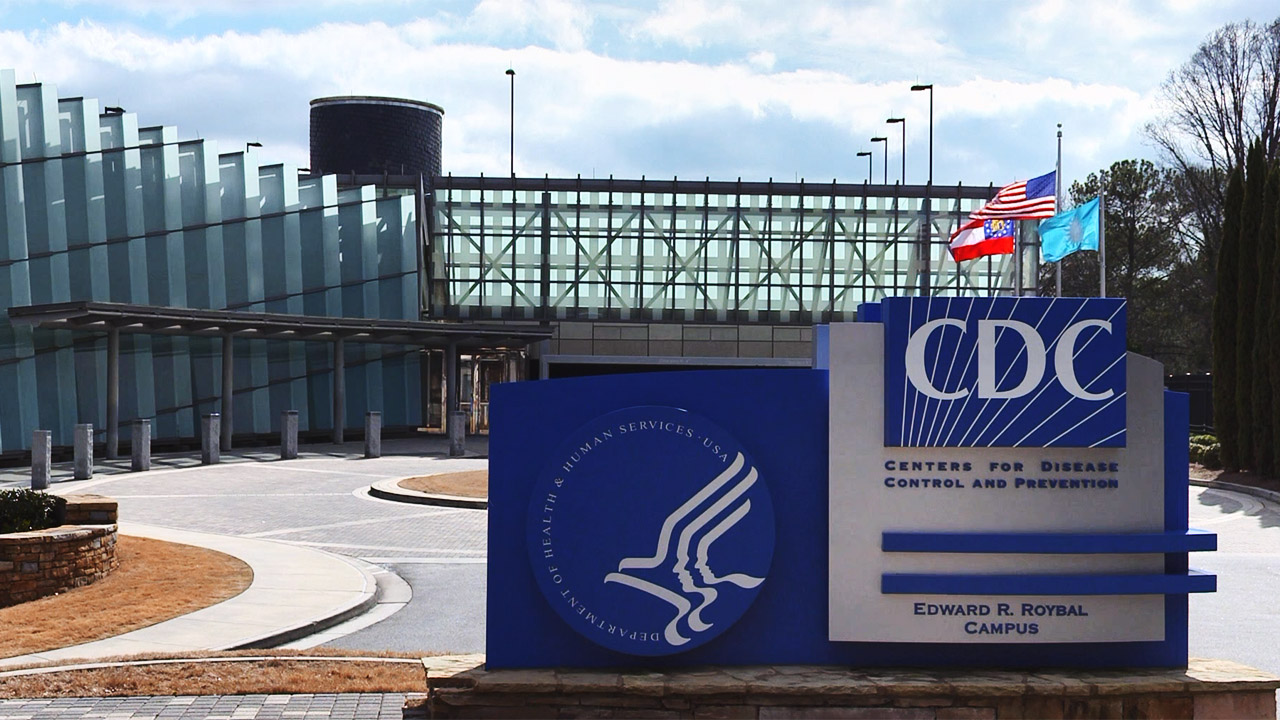Health
Obama budget includes modest increase in AIDS funds
Spending plan calls for $105 million boost in drug program

President Obama’s proposed budget for fiscal year 2012 drew praise from AIDS advocacy groups for its inclusion of small to modest funding increases in federal AIDS programs at a time when the White House and Congress are under great pressure to cut spending.
The proposed budget calls for a $105 million increase in the AIDS Drug Assistance Program, or ADAP, over the fiscal year 2010 spending level.
AIDS and LGBT advocacy groups have pushed hard for funding increases for the federal-state ADAP program as state contributions to the program have dried up due to the national recession, resulting in waiting lists for people who rely on the program for life-saving AIDS medication.
“We realize the resources of the federal government are severely constrained,” said Carl Schmid, deputy executive director of the AIDS Institute. “While the proposed funding levels are far from what is needed to provide the necessary care and treatment for people with HIV/AIDS or to significantly reduce the number of new infections, the AIDS Institute appreciates the budget requests and now urges the Congress to show a similar level of support.”
Schmid and Frank Oldham, president and CEO of the National Association of People With AIDS, expressed concern that Republican leaders of the House of Representatives are proposing cuts of close to 20 percent in federal AIDS programs for the fiscal year 2011 budget, which Congress has yet to finalize.
“The reality of the proposed cuts is that lower-income Americans living with HIV will not have access to the antiviral drugs that keep them healthy – and also make them less likely to pass the virus along to others,” Oldham said. “More people will get sick and die, and a disproportionate number of them will be poor and of color.”
Congress was expected to vote on a final version of the FY 2011 budget within the next few weeks. Last year, after Republicans and Democrats were unable to reach an agreement on the FY 2011 budget for most federal agencies, Congress approved a measure known as a continuing resolution, which keeps the government funded at fiscal year 2010 levels.
In a telephone news briefing on Tuesday, White House Domestic Policy Council Director Melody Barnes said the administration was involved in discussions with members of Congress to address the 2011 budget at the same time that the White House promotes its 2012 budget.
“With the budget that he put out yesterday…he has articulated the values that he has around this set of issues,” Barnes said of Obama’s intentions for the AIDS budget. “So I think his budget really stands as the backdrop and as the platform from which we will be operating as we move forward.”
Barnes added, “Obviously, there will be many conversations going forward about the budget and how we bring the current year to closure. But this [FY 2012] budget really articulates the framework that he believes should be the guiding set of principles.”
During the phone briefing, Jeff Crowley, director of the White House Office of National AIDS Policy, said the 2012 budget also reflects the president’s recently released National HIV/AIDS Strategy document. Crowley noted that strategy document, among other things, calls for targeting federal AIDS funds to population groups that are affected most by the disease, especially gay and bisexual men and people of color.
“People living with HIV should not have to live in fear that their life-saving medications could be taken away from them,” Crowley said.
“By increasing the annual fund by $105 million from early fiscal year 2010, when waiting lists in ADAPs first appeared, the president is demonstrating a strong commitment to standing with people living with HIV and working with states and others to bridge the gap in access to HIV medications until insurance coverage is expanded in 2014 through the Affordable Care Act.”
Crowley was referring to the sweeping health care reform bill initiated by Obama and passed by the Democratic-controlled House and Senate in 2009. With Republicans gaining control of the House this year, the House passed legislation calling for the repeal of the Affordable Care Act. The Senate, which remains under Democratic Party control, defeated the repeal legislation.
AIDS activists have said they remain hopeful that the Affordable Care Act’s provisions expanding health insurance coverage for low-income people will greatly reduce the need for people with HIV to rely on ADAP for their medication.
The president’s fiscal year 2012 budget includes these additional proposals for federal AIDS spending:
• An increase of $5 million over FY 2010 levels for early intervention and primary care service for people with HIV/AIDS under the Ryan White CARE Act.
• An increase of $58 million over FY 2010 for the U.S. Centers for Disease Control and Prevention (CDC) as a means of helping reach the goals of the National HIV/AIDS Strategy document’s call to reduce the number of new HIV infections in the U.S.
• An increase of $750 million above FY 2010 levels for medical research at the National Institutes of Health. Of this amount, $74 million would be allocated for AIDS and HIV prevention research. Crowley said the research would focus on developing an AIDS vaccine and new microbicides to prevent the AIDS virus from infecting people and on the discovery of improved drug therapies to prolong the lives of people with HIV.
• A $325 million funding allocation for the Housing Opportunities for People With AIDS, or HOPWA, at the Department of Housing and Urban Development—the same amount approved for the FY 2010 budget. HOPWA provides rent subsidies and other assistance to low-income people with HIV/AIDS.
Republican leaders said the Obama budget for FY 2012, which calls for $3.7 trillion in spending, is far too large and vowed to make sharp cuts when the budget undergoes the review and approval process on Capitol Hill in the coming weeks.
GOP leaders didn’t initially discuss the 2012 budget’s spending proposals on AIDS programs, but Capitol Hill observers expect House Republicans to make the same proposed cuts as those made for the fiscal year 2011 budget.
“HIV programs are so small a part of the federal budget – less than one tenth of one percent – that even eliminating them entirely will not materially reduce this year’s deficit,” Oldham said in a statement.
“But the proposed cuts will contribute to deficits in years to come, as Americans whose new infections this year could have been prevented for a few dollars come back next year, needing drugs and support services that will cost far more, for years to come,” he said.
During the White House phone news briefing, Barnes said the Obama budget for FY 2012 also calls for small increases in funding at the Justice Department’s civil rights division, which enforces the Mathew Shepard and James Byrd Jr. Hate Crime Prevention Act. The act authorizes the federal government to prosecute hate crimes targeting the LGBT community.
Health
UNAIDS to commemorate Zero Discrimination Day’s 10th anniversary
UN agency urges global action to protect human rights

As the world marks the 10th anniversary of Zero Discrimination Day; UNAIDS is sounding the alarm on the increasing threats to human rights, calling for renewed efforts to protect the rights of all individuals as a fundamental step towards ensuring health for everyone.
Established by UNAIDS a decade ago, Zero Discrimination Day aims to promote equality and fairness regardless of gender, age, sexuality, ethnicity or HIV status. The progress achieved over the past years is now in jeopardy, however, due to rising attacks on the rights of women, LGBTQ people and other marginalized communities.
UNAIDS Executive Director Winnie Byanyima emphasized the critical link between protecting human rights and safeguarding public health.
“The attacks on rights are a threat to freedom and democracy and are harmful to health,” she said in a press release. “Stigma and discrimination obstruct HIV prevention, testing, treatment and care and hold back progress towards ending AIDS by 2030. It is only by protecting everyone’s rights that we can protect everyone’s health.”
Despite challenges, there has been notable progress.
At the onset of the AIDS pandemic more than 40 years ago, two-thirds of countries criminalized consensual same-sex sexual relations. They are now decriminalized in two-thirds of countries. An additional 38 countries around the world have pledged to end HIV-related stigma and discrimination, contributing to positive changes that include 50 million more girls attending school compared to 2015.
To sustain and enhance these advancements; UNAIDS urges global support for women’s rights movements, LGBTQ rights, racial justice, economic justice, climate justice and peace initiatives. By standing with communities advocating for their rights, the U.N. aims to reinforce the collective effort towards a more inclusive and equitable world.
Zero Discrimination Day is observed on March 1.
Events and activities that will take place around the world throughout the month will serve as reminders of the essential lesson and call to action: Protecting everyone’s health is synonymous with protecting everyone’s rights.
“Through upholding rights for all, we will be able to achieve the Sustainable Development Goals and secure a safer, fairer, kinder and happier world — for everyone,” said Byanyima.
Health
New CDC report finds transgender women at higher risk for HIV
More than 1,600 people in seven cities surveyed

The Centers for Disease Control and Prevention issued a new study report this week that revealed that restricted by employment and housing discrimination and lack of access to needed gender-affirming healthcare for transgender women increasing the risk of contracting HIV.
Researchers reviewed data from a 2019-2020 survey, the National HIV Behavioral Surveillance Among Transgender Women, which found that the demographics of HIV/AIDS have been disproportionally high, especially among Black and Latina trans women, who had experienced employment and housing discrimination coupled with lack of access to gender-affirming healthcare.
The Jan. 25 Morbidity and Mortality Weekly Report was based on data studies of more than 1,600 trans women in seven major urban locales. Participants from Atlanta, Los Angeles, New Orleans, New York, Philadelphia, San Francisco and Seattle were chosen by referrals from people and community-based organizations who knew or were part of the local population of trans women.
The study’s researchers noted: “Employment discrimination occurs at the overlapping nexus of poverty, homelessness, incarceration, health insurance, disability, food insecurity and survival sex work. These issues are interconnected.”
The study stated that trans women’s inability to access quality healthcare, including gender-affirming treatment or access to PrEP, and can expose them to potential incarceration as many turn to “survival sex work” and violence, which increases the risk of contracting HIV.
The study’s author’s pointed out: “When economically marginalized transgender women are refused employment, this refusal cyclically contributes to economic hardships. This analysis …demonstrates the importance of transgender women working and living with dignity and without fear of unfair treatment.”
Health
A Whole New Perspective on Well-Being
The Mather’s team recognizes that everyone’s wellness journey is completely unique to their life experiences and influences.

It’s easy to spot the distinctive, elegant silhouette of The Mather, a Life Plan Community for those 62+ opening this spring in Tysons, Virginia. What is not apparent to the naked eye is The Mather’s unique wellness philosophy, which is literally built into the community.
The Mather’s team recognizes that everyone’s wellness journey is completely unique to their life experiences and influences.
Nature is one of the important factors that contribute to well-being. So The Mather is incorporating biophilic design—a design approach to facilitate access to nature or things that replicate natural patterns. This can include interior spaces with sightlines to a garden, choosing natural wood and stone as interior materials, or incorporating fragrant flowers and plants indoors to spark memories and provide tactile opportunities such as gardening.

“Providing biophilic design within interior settings connects residents to the natural world,” says Mary Leary, CEO and President of Mather, the organization behind The Mather. “Research shows that a connection to nature provides positive benefits to mental states and overall well-being. At The Mather, biophilic design is the intersection of buildings and programs with nature in an urban setting.”
“The Mather is attracting a diverse group of older adults,” says Mary. “As a result, we aim to incorporate wellness practices from around the world, including Wyda movement theory of the Celtic Druids, which helps people achieve harmony with nature and contentment through mindfulness.” This holistic regenerative approach is similar to Qi Gong and yoga, while born in a different part of the world. Mather Institute has a special focus on mindfulness to support older adults’ practice of present moment awareness, which can lead to increased overall well-being, compassion, and joy.
A very different example of a wellness offering at The Mather is the Gharieni Welnamis spa wave bed, which uses computer-controlled vibrational therapy and audio frequencies to train the brain to relax. “The bed increases mindfulness, concentration, and creativity—all of which support our mission of creating Ways to Age Well,SM” says Mary.
These and other personalized ways to wellness will ensure that residents of The Mather can choose from seemingly countless ways to focus on their well-being. In other words, the sky’s the limit!
-

 State Department3 days ago
State Department3 days agoState Department releases annual human rights report
-

 South America1 day ago
South America1 day agoArgentina government dismisses transgender public sector employees
-

 District of Columbia2 days ago
District of Columbia2 days agoCatching up with the asexuals and aromantics of D.C.
-

 Politics4 days ago
Politics4 days agoSmithsonian staff concerned about future of LGBTQ programming amid GOP scrutiny













